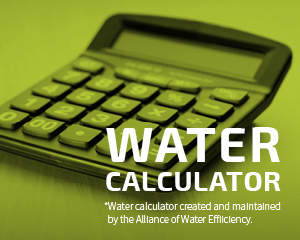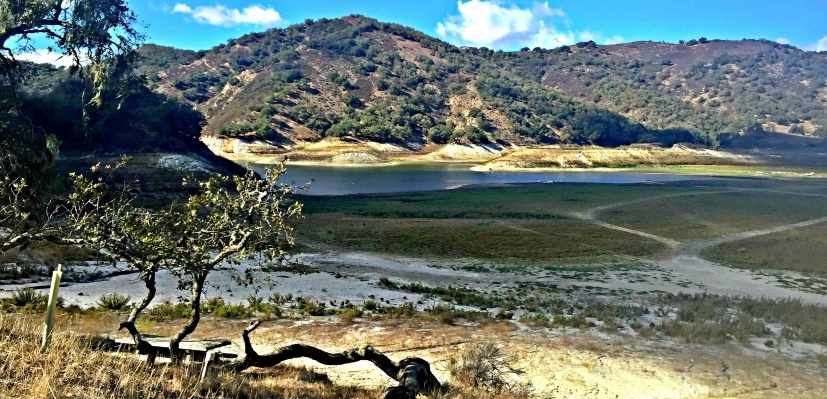Water Conservation Tips For Your Landscape And Garden

Love your yard but save the planet with these water saving tips for your landscaping and garden.
We all love the look and feel of a beautiful lush garden and landscape. However, the water required for upkeep puts the rest of our community and planet at risk. Drought or no drought, we must all think differently about the way we use water.
Use these water conservation tips for your yard and start doing your part to preserve the future of our planet – for your children, and your children’s children.
Outdoor tips
LANDSCAPING
- Use porous material for walkways and patios to prevent wasteful runoff and keep water in your yard.
- Group plants with the same watering needs together to avoid overwatering some while underwatering others.
- Reduce the amount of lawn in your yard by planting shrubs and ground covers appropriate to your site and region.
- Plant species native to your region.
- Plant in the spring and fall, when the watering requirements are lower.
- When sprucing up your front or backyard, consider xeriscaping. This landscape method uses low-water-use plants to limit your water use.
- Consider attending a landscape class hosted by a water provider. Most workshops occur in the spring and fall. UC Extension Master Gardener Program is a great example.
- Avoid planting grass in areas that are hard to water, such as steep inclines and isolated strips along sidewalks and driveways.
- Leave lower branches on trees and shrubs and allow leaf litter to accumulate on the soil. This keeps the soil cooler and reduces evaporation.
- Start a compost pile. Using compost in your garden or flower beds adds water-holding organic matter to the soil.
- Use a layer of organic mulch on the surface of your planting beds to minimize weed growth that competes for water. Organic mulch helps reduce evaporation and saves hundreds of gallons of water a year.
- Spreading a layer of organic mulch around plants helps them retain moisture, saving water, time and money.
- Visit your local xeriscape garden to view plants that thrive in our hot desert environment. The San Luis Obispo Botanical Garden is an excellent example.
- Next time you add or replace a flower or shrub, choose a low-water-use plant and save up to 550 gallons each year.
- Call your local conservation office for more information about xeriscaping with water-thrifty trees, plants, and ground covers.
- Collect water from your roof by installing gutters and downspouts. Direct the runoff to plants and trees.
LAWN CARE
- Hire a qualified pro to install your irrigation system and keep it working properly and efficiently.
- Hire a Smartscape Certified professional landscaper.
- Adjust your lawn mower to the height of 1.5 to 2 inches. Taller grass shades roots and holds soil moisture better than short grass.
- Leave lawn clippings on your grass, this cools the ground and holds in moisture.
- If installing a lawn, select a lawn mix or blend that matches your climate and site conditions.
- Aerate your lawn periodically. Holes every six inches will allow water to reach the roots, rather than run off the surface.
- If walking across the lawn leaves footprints (blades don’t spring back up), then it is time to water.
- Let your lawn go dormant (brown) during the winter. Dormant grass only needs to be watered every three to four weeks, less if it rains.
- Avoid overseeding your lawn with winter grass. Ryegrass needs water every few days, whereas Dormant Bermuda grass needs water monthly.
- Remember to weed your lawn or landscape and garden regularly. Weeds compete with other plants for nutrients, light and water.
- While fertilizers promote plant growth, they also increase water consumption. Apply the minimum amount of fertilizer needed.
- Water your summer lawns once every three days and your winter lawn once every five days (if you absolutely must water in the water).
- Catch irrigation water in an empty tuna can to measure sprinkler output. 3/4 to 1 inch of water is enough to apply each time you irrigate.
WATERING & IRRIGATION
- Read the Landscape Watering by the Numbers guidebook to help you determine how long and how much to water.
- Use a trowel, shovel, or soil probe to examine soil moisture depth. If the top two to three inches of soil are dry, it’s time to water.
- Set a kitchen timer when using the hose as a reminder to turn it off. A running hose can discharge up to 10 gallons per minute.
- Check your sprinkler system frequently and adjust sprinklers so only your lawn is watered and not the house, sidewalk or street.
- Minimize evaporation by watering during the early morning hours when temperatures are cooler and winds are lighter.
- Timing is everything when it comes to irrigation. Learn how to set your controller properly.
- Look for WaterSense® labeled irrigation controllers.
- Learn how to shut off your automatic watering system in case of malfunctions or rain.
- Apply water only as fast as the soil can absorb it.
- If water runs off your lawn easily, split your watering time into shorter periods to allow for better absorption.
- Water only when necessary. More plants die from over-watering than from under-watering.
- Signs of overwatering: Leaves turn lighter shades of green or yellow, young shoots wilt, and sometimes algae or fungi grow.
- Adjust your watering schedule each month to match seasonal weather conditions and landscape requirements.
- Install a rain sensor on your irrigation controller so your system won’t run when it’s raining.
- Water dry spot by hand instead of running the whole irrigation system longer.
- Don’t water your lawn on windy days when most of the water blows away or evaporates.
- Use drip irrigation for shrubs and trees to apply water directly to the roots, where it’s needed.
- Water your plants deeply but less frequently to encourage deep root growth and drought tolerance.
- Use sprinklers that deliver big drops of water close to the ground. Smaller drops and mist often evaporate before hitting the ground.
- Use a rain barrel to harvest rainwater from gutters for watering gardens and landscapes.
- For hanging baskets, planters and pots, put ice cubes on top of the soil to give your plants a cool drink of water without overflow.
- Remember to periodically check your sprinkler system valves for leaks, and to keep sprinkler heads in good shape.
- Spring is a great time to give your irrigation system a checkup to ensure it’s working efficiently.
- Pruning properly can help your plants use water more efficiently.
POOL
- Use a pool cover to help keep your pool clean, reduce chemical use and prevent water loss through evaporation.
- Make sure your swimming pools, fountains and ponds are equipped with recirculating pumps.
- If you have an automatic refilling device, check your pool periodically for leaks.
- When back-washing your pool, consider using the water on salt-tolerant plants in the landscape.
- Minimize or eliminate the use of waterfalls and sprays in your pool. Aeration increases evaporation.
- Don’t overfill the pool. Lower water levels will reduce water loss due to splashing.
- Keep water in the pool when playing, it will save water.
- Instead of building a private pool, join a community pool.
- Trickling or cascading fountains lose less water to evaporation than those that spray water into the air.
- Use a grease pencil to conduct a bucket test to check for pool leaks. An unnatural water level drop may indicate a leak.
GENERAL OUTDOOR
- Winterize outdoor spigots when temperatures dip below freezing to prevent pipes from leaking or bursting.
- For more immediate hot water and energy savings, insulate hot water pipes.
- Use a commercial car wash that recycles water. Or, wash your car on the lawn, and you’ll water your grass at the same time.
- Use a hose nozzle or turn off the water while you wash your car. You’ll save up to 100 gallons every time.
- Wash your pets outdoors, in an area of your lawn that needs water.
- When cleaning out fish tanks, give the nutrient-rich water to your non-edible plants.
- When you give your pet fresh water, don’t throw the old water down the drain. Use it to water your trees or shrubs.
- Use a broom instead of a hose to clean patios, sidewalks and driveways, and save water every time.
- Evaporative coolers require a seasonal maintenance check. For more efficient cooling, check your evaporative cooler annually.
- If you have an evaporative cooler, direct the water drain to plants in your landscape.
- Set water softeners for a minimum number of refills to save both water and chemicals, plus energy, too.
- If you have an evaporative cooler, install a recirculating pump to keep water from bleeding off with one pass
- Report broken pipes, leaky hydrants and errant sprinklers to property owners or your local water provider.
- Know where your master water shut-off valve is located. Were a pipe to burst, this could save gallons of water and prevent damage.
- Install a thermostat and timer on your evaporative cooler so it only operates when necessary.
Visit our water conservation FAQ page to get answers to some of the most commonly asked questions about water usage and conservation.
Want to find out what more you can do to help?
Call Think H2O
Arroyo Grande Residents call (805) 473-5447
Pismo Beach Residents call (805) 773-4657
Or contact us here.






Edit1.jpg)
0.jpg)

1.jpg)
10.jpg)

edit0.jpg)